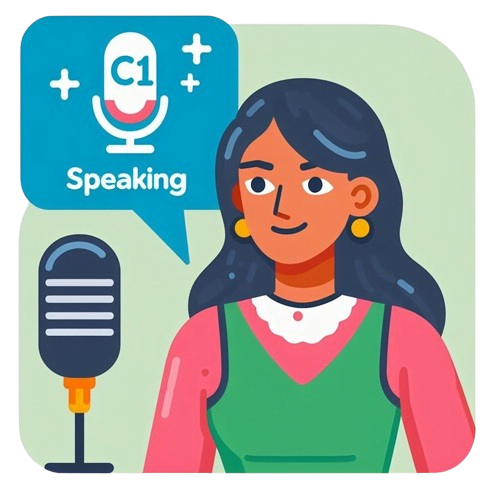Cambridge C1 (CAE): Reading and Use of English Part 2

Key Points
- Part 2 Overview: Tests knowledge of English structure and text understanding to fill gaps with a single word, focusing on grammar or lexico-grammatical elements.
- Answering Strategy: Emphasizes understanding sentence meaning, creating synonyms, and ensuring grammatical and collocational correctness of the chosen word.
What you will find in this guide:
Cambridge C1 Advanced (CAE) Reading and Use of English Part 2
Welcome to my comprehensive guide on mastering the Cambridge C1 Advanced (CAE) Reading and Use of English Part 2. As an English language enthusiast aiming for excellence, you’re likely familiar with the challenges and rewards of preparing for high-level proficiency exams like the CAE. The Reading and Use of English paper is a critical component of this exam, and Part 2, in particular, can be a make-or-break section for many candidates.
In this introduction, I’ll walk you through what to expect from Part 2, often referred to as the ‘Open Cloze’ task. This part assesses your deep understanding of English grammar and vocabulary by presenting you with a text containing eight gaps that you must fill1. It’s a test of both your knowledge of language structure and your ability to comprehend the given text in a nuanced way.
The key to conquering this section lies in familiarizing yourself with common grammatical structures, such as verb forms, auxiliary and modal verbs, pronouns, prepositions, conjunctions, modifiers, and determiners2. It’s not just about knowing these elements in isolation but understanding how they interact within the context of a sentence.
As we delve deeper into this guide, I’ll share tips and strategies that have helped countless students excel in Part 2. We’ll look at typical problems you might encounter and how to tackle them head-on. By the end of this guide, you’ll be equipped with the knowledge and confidence to approach Part 2 with a calm and clear mind.
Stay tuned as we explore the intricacies of the CAE Reading and Use of English Part 2 together. Your journey to C1-level proficiency is just beginning!
Alternatively, you can check out my guides on the other parts of the CAE reading and use of English linked below:
Cambridge C1 Advanced CAE Reading Part 1 (testprp.com)
Understanding Part 2
In our journey to conquer the Cambridge C1 Advanced (CAE) Reading and Use of English Part 2, it’s essential to grasp what this section entails and why it’s a vital part of the exam. This segment, also known as the ‘Open Cloze’ task, is designed to test your proficiency in English grammar and vocabulary in a practical context.
Part 2 presents you with a text that has eight gaps, each requiring a specific word to complete the sentence. Unlike multiple-choice questions, there are no options provided; you must rely on your language skills to find the correct answer3. This task assesses your ability to understand the text’s overall meaning and use language accurately.
The challenge here is not just filling in blanks but doing so in a way that reflects a native-like command of English. It’s about knowing which preposition fits the context, which verb tense completes the thought, or which conjunction best links ideas. These are the subtleties that can make or break your performance in this part of the exam.
Sample Question
The origin of language
The truth (0) ..IS.. nobody really knows how language first began. Did we all start talking at around the same time (9) ……….of the manner in which our brains had begun to develop? Although there is a lack of clear evidence, people have come up with various theories about the origins of language. One recent theory is that human beings have evolved in (10)……………a way that we are programmed for language from the moment of birth. In (11) …….. words, language came about as a result of an evolutionary change in our brains at some stage. Language (12) …….. well be programmed into the brain but, (13) …….. this, people still need stimulus from others around them. From studies, we know that (14) ………… children are isolated from human contact and have not learnt to construct sentences before they are ten, it is doubtful they will ever do so. This research shows, if (15) …………else, that language is a social activity, not something invented (16) ……….isolation.
Potential Challenges of Part 2
My experience in teaching Advanced English and coaching proficiency exam candidates for over a decade has proved to me time and time that exam tasks that involve testing candidates’ grammar and vocabulary skills are often the most difficult parts for candidates. This is especially true for The Cambridge C1 Advanced (CAE) reading and use of English part 2 as it is perhaps the most difficult part of the reading paper! In this part, I will share my experience of working with numerous students to let you know what potential challenges you may face in your exam preparation endeavor. Knowing these challenges can help you prepare better and make sure you will have a plan to overcome them. So, we will go over the challenges of part 2 in this part of the guide.
Some potential Challenges may include:
1- You have to rely on your own knowledge: As you know, you will get a text with some blanks to fill out, but you won’t get any options to choose from in the form of multiple-choice items. Therefore, you have to rely on your own knowledge and information to find the correct answer from. This could be challenging because the exam itself is a stressful situation and you have to operate under stress. So. you may simply not remember the right word or find yourself clueless because your knowledge of vocabulary or grammar is limited.
2- Multiple answers may seem to be true: In the situations where you have to write an answer from your own knowledge, you may find that multiple words could go in a blank! This could be confusing and may add to your stress at the exam session!
However, these challenges can easily be addressed and prevented with the tips I will provide you in the next section of this guide.
Guide to Part 2
Part 2 of the reading and use of English, the fill in the blanks, tests your ability to use English vocabulary and grammar effectively. Unlike part 1, you don’t get options to choose from and need to use your own knowledge to find the answer. So, please consider the following:
Step 1:
Make sure to understand what the sentence containing the blank space means. This is vital because you need to complete the idea expressed in that sentence.
Step 2:
Choose a word that matches the idea (meaning) that the sentence is trying to express.
Step 3:
Since you don’t have options to choose from, it is a good idea to create options for yourself! Think of some synonyms and similar words to the word you have chosen.
Step 4:
Use your knowledge, logic, and reasoning skills to choose one word from the synonyms you came up with in the previous step.
Step 5:
Make sure that the word you have chosen to go in the blank matches the word before the blank space and the word right after it. Make sure that the word matches the idea expressed in that sentence, and that it is grammatically correct when used. This is where you need to make sure your word collocates with the word after the blank, or that it is the right part of speech for that part of the sentence.This is essential because you need to write a word that correctly matches the grammar of the sentence it is placed in.
Step 6:
Read the next sentence and double check your answer to see if it matches the broader meaning expressed in that part of the text.
Step 7:
Make sure your answer is spelled correctly
Step 8:
Make sure to write only one word.
Practice Test
Use the guide to practice C1 Advanced (CAE) reading and use of English part 2 using the following sample test.
Applying for your first job?
Getting a job is (O) ….TOO.. important to leave to chance; (9) ………… all, work is likely to play a significant role in your life for many years. So before sending in any applications, think hard about (10) ………… would really suit you. Concentrate on jobs for (11) ………… you have an aptitude – (12) ………… can be very demoralising to have your application turned down. Ideally, your job should be not only one you can do well, (13) ………… also one that makes you look forward to going to work every morning. It’s important to consider the culture of the organisations you’re applying (14) ………… Some companies are (15) ………… obsessed with results and profits that employees are under stress all the time. You need to be clear in your own mind (16) ………… or not you could work in an environment like that. Making an effort in the early stages of applying for a job will almost certainly pay off in the long run.
References
How was your experience?
Describe your experience taking the C1 Advanced (CAE) reading and use of English part 2 in the comment section below.







It was sort of difficult especially with the grammar. However, it was a good challenge and helped improve my comprehension skills
It was a nice experience because now I could understand many grammar differences. Also, I remember a lot of grammar.
This practice was very helpful for me and make me realize that the most difficult part of this task is to recognize when and for what we use the words.
The only thing I have to say is that I need to practice a lot. The guide is perfect but I think that with practice I can overcome those challenges.
When I started the practice using the tips, it helped me to solve and understand more about the complexity of the structure and the grammar that I need to use.